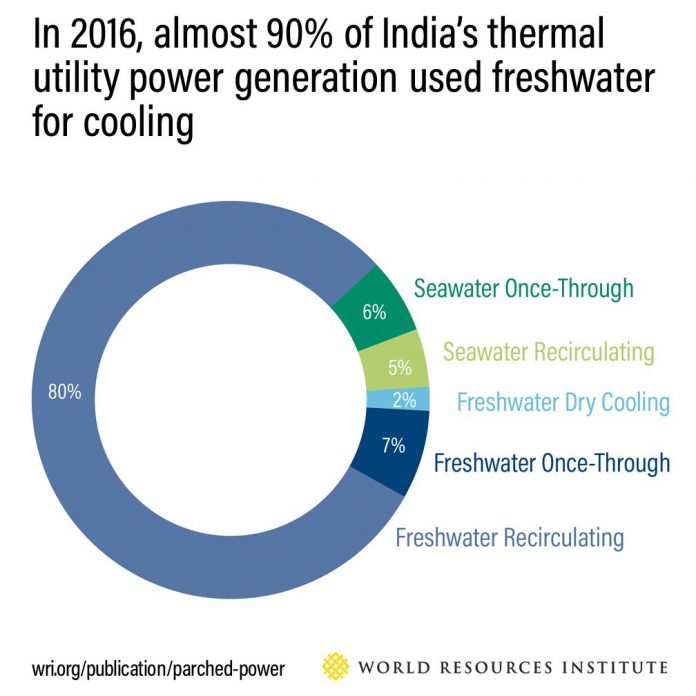A new paper from the World Resources Institute (WRI), Parched Power: Water Demands, Risks and Opportunities for India’s Power Sector, analyses all of India’s 400 plus thermal power plants and finds that India’s power supply is increasingly in jeopardy due to water shortages, costing power generation and revenue.
“Water shortages shut down power plants across India every year,” said Om Prakash Agarwal, CEO, WRI India. “When power plants rely on water sourced from scarce regions, they put electricity generation at risk and leave less water for cities, farms and families. Without urgent action, water will become a chokepoint for India’s power sector.”
Using a new methodology that WRI developed, researchers discovered that 90 percent of India’s thermal power plants depend on freshwater for cooling. This is significant because thermal power plants–which include coal, solar thermal, geothermal, waste incineration, petroleum and some natural gas power plants–generate almost all of India’s electricity.
Combining this with WRI’s Aqueduct water risk analysis, the researchers found that nearly 40 percent of India’s freshwater-dependent thermal power plants experience high water stress. These plants are increasingly vulnerable, amidst India’s ongoing commitment to expanding electricity access for all.
“Our lack of knowledge about how much water India’s power sector is using makes the problem harder to solve,” said Ivaturi N. Rao, Head, Environment and Climate Change for Tata Power, India’s largest integrated power company. “The Government of India has recently mandated limits for specific water consumption at thermal power plants, which is a critical step forward. However, they should also create policy incentives for water conservation. This will help encourage water efficiency and innovation across the power sector.”
The Indian energy sector’s dependence on increasingly scarce water resources has serious consequences. Between 2013 and 2016, 14 of India’s 20 largest thermal utility companies experienced one or more shutdowns due to water shortages. WRI calculates that shutdowns cost these companies over US$1.4 billion in potential revenue from the sale of power. Water shortages cancelled out more than 20 percent of India’s growth in electricity generation between 2015 and 2016.








